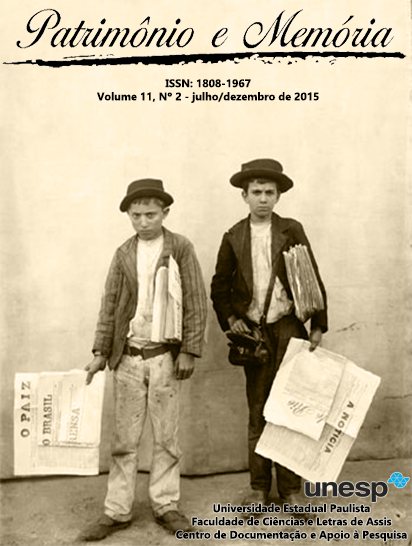The ruins of a trip
fiction and testimony about the Araguaia Guerrilla
DOI:
https://doi.org/10.5016/pem.v11i2.3530Keywords:
Luiz Fernando Emediato, Unfaihful narrator, Araguaia guerrilla movement, Military dictatorshipAbstract
In the tale “Trevas no Paraíso", Trevas no paraíso – Histórias de amor e guerranosanos de chumbo, written byLuiz Fernando Emediato, the Araguaia Guerrilla repression context is built through the eyes of a narrator who goes withhis father, a political activist, to a trip to the heart of the guerrilla. The boy faces fragments of a social and historical reality that sees and does not understand well because he unawares the real purpose of the trip as well as the father's identity. The look of the character and the other voices that appear in the tale, often in direct speech, opens the possibility of saying that the fiction several times simulate the structure of testimony, which was shrouded in official accounts of guerrillas. The tale becomes reconstitution, as much as testimony as memory, an individual story, the real catch, by citing historical context.
References
BENJAMIN, Walter. Sobre o conceito da história. In:______. Magia e técnica, arte e política - Ensaios sobre literatura e história da cultura. São Paulo: Brasiliense, 1994. p. 222-232.
BOOTH, Wayne. A retórica da ficção. Trad. Maria Tereza H. Guerreiro. Lisboa: Editora Arcádia, 1980.
CARVALHO, Alfredo Leme Coelho. O narrador infiel e outros estudos de teoria e crítica literária. São José do Rio Preto: Ed. Rio-Pretense, 2005.
EMEDIATO, Luiz. Fernando. Trevas no paraíso – Histórias de amor e guerra nos anos de chumbo. São Paulo: Geração Editorial, 2004.
GASPARI, Elio. A ditadura escancarada. São Paulo: Cia. das Letras, 2002.
LEITE, Ligia Chiappini M. Narração, ficção e História. In:______. O foco narrativo. 10 ed. São Paulo: Ática, 2002. p. 71-86.
MARCONDES FILHO, Ciro. Violência política. São Paulo: Moderna, 1987.
MORAES, Taís; SILVA, Eumano. Operação Araguaia: os arquivos secretos da guerrilha. São Paulo: Geração Editorial, 2012.
PELLEGRINI, Tania. Gavetas vazias- Ficção e política nos anos 70. Campinas/São Carlos: Mercado de Letras/Edufscar, 1996.
SELIGMAN-SILVA, Márcio. Narrar o trauma: a questão dos testemunhos de catástrofes históricas. Revista Psicologia Clínica, Rio de Janeiro, n. 1, vol. 20, p. 65-82, 2008. Disponível em: <http://www.scielo.br/pdf/pc/v20n1/05>. Acesso em: 02 ago. 2014.
SPINDEL, Arnaldo. O que são ditaduras.São Paulo: Brasiliense, 1981.
SÜSSEKIND, Flora. Retratos e Egos. In:______. Literatura e vida literária – Polêmicas, diários & retratos. Belo Horizonte: Ed. da UFMG, 2004, p. 71-114.
VECCHI, Roberto. O passado subtraído da desaparição forçada: Araguaia como palimpsesto. Revista Estudos de Literatura Brasileira Contemporânea, Brasília, n. 43, p. 133-149, jan./jun. 2014.
ZONTA, Márcio. Índios do Pará revelam atrocidades do exército, reportagem para o Jornal Brasil de Fato, São Paulo [maio 2014]. Disponível em: <http://www.brasildefato.com.br/node/28663>. Acesso em: 02 ago. 2014.
Downloads
Published
How to Cite
Issue
Section
License
Copyright (c) 2015 Patrimônio e Memória

This work is licensed under a Creative Commons Attribution 4.0 International License.
All the content of the journal, except where noted, is licensed under a Creative Commons BY attribution license.


